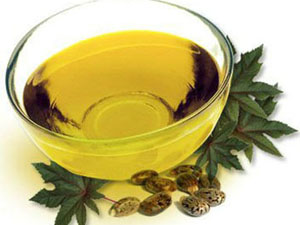Castor Oil Extraction Process

Castor Oil Introduction
Castor oil is extracted from the seeds of Ricinus communis, also known as castor oil plant. It's a perennial plant that grows up to 12 meters. It has smooth leaves and red flowers, producing highly toxic seeds with brown spots. Although these seeds are toxic, their oils proved to be very useful for human medical needs and other uses.Castor oil and its derivatives are used in the manufacturing of soaps, lubricants, hydraulic and brake fluids, paints, dyes, coatings, inks, cold resistant plastics, waxes and polishes, nylon, pharmaceuticals and perfumes.
Castor Oil Extraction
Castor seeds must be shelled whether they are harvested from commercial farms or the wild. The shell can be done manually or with a peeler. 50% of the weight in the seeds is oil. Therefore, to extract this oil, the seeds have to be crushed and pressed with a screw oil press. The extracted oil is filtered and the material removed from the oil is returned to the oil press along with the fresh material. The final material discharged from the press is called castor cake and usually contains 10% oil. The ramie cake was crushed and the heptane was used as a solvent to extract 10% of the oil contained therein by solvent extraction.The freshly extracted oil is filtered. The filtration process removes impurities such as acids, dissolved gases, particulates, and water. The filtered oil is sent to the refinery for refinement. It needs to go through four stages: degumming, neutralization, bleaching and deodorization.
Degumming of the oil:
This is usually the first step in refining castor oil. The purpose of degumming is to remove oil-insoluble compounds, such as gums. This process involves adding hot water to the filtered oil, then stirring the mixture and precipitating in a separatory funnel. The insoluble water layer is then removed. Repeat this process several times to remove most of the gums.Neutralization:
This is the second stage and its purpose is to eliminate the free fatty acids present in the oil. This process involves heating the degummed oil in the beaker at a temperature of 80°C. Then 40 ml of sodium hydroxide was added and stirred to form a homogeneous solution. Sodium hydroxide neutralizes part of the fatty acids. Sodium chloride is then added to remove residual fatty acids that appear as soap in the solution. This process is repeated until all the soap in the solution has been removed. Then all the neutralizing oil was pulled into the beaker.Bleaching:
This is the third stage and its purpose is to eliminate coloring materials, oxidation products and phospholipids. The neutralization oil is heated to 90°C, a fullerene bleach is added, stirred for about 30 minutes, and the resulting mixture is filtered at 70°C to give a clear oil.Deodorization:
This is the last stage whose purpose is to remove odors from the oil.The oil that has made through these four stages is modified for various usages. When modifying castor oil, it goes through different chemical processes such as hydrogenation, oxidation, and thermal treatments to make products for specific purposes.
Castor Oil Applications
- Cleanses toxins from the scalp
- Stimulates the growth of air and thickness
- It has anti-inflammatory property which relieves pain in joint and so muscles.
- It relieves constipation when mixed with juice and the mixture drank by the constipated person.
- Treats most skin disorders.
- Treats dysentery diseases.
- The mentioned uses are some of the uses of castor oil.
Get in touch now!











